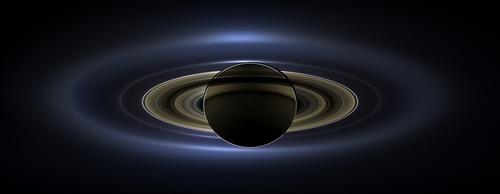Dimensionality plays an important role in physical systems. For example, one can build and study systems that are effectively of a lower dimension, such as “wires”, or “interfaces”, or one can study theoretical models in various dimensions. Apart from studying such systems, one can also speculate whether our spacetime dimension is, at a fundamental level, really 4, or whether it might somehow be more than 4.
In the context of general relativity, spacetime geometry is thought of as the realization of gravity, so the question becomes whether higher dimensional gravity theories could play a role in Nature. It was raised in fact already in the earliest days of general relativity, starting from the investigations of Kaluza and Klein back in the 20s. Their basic idea — far reaching generalizations of which continue to be explored today — was that “small” extra dimensions could explain in a natural way the other forces apart from gravity, which, in this way of thinking, are related to the “modes” of fields propagating in the “extra dimensions”. Another idea suggests to investigate scenarios wherein the usual force- and matter fields (apart from gravity itself) are confined, by some mechanism, to a 4-dimensional “brane” embedded into a higher dimensional ambient space. Yet another idea is to relate certain physical systems, such as certain strongly coupled conformal field theories, in 4 dimensions, to a ficticious higher dimensional theory which effectively provides a “holographic” description of the original theory (“gauge-gravity-duality” aka “AdS-CFT correspondence”) and thereby novel computational tools. This line of research is nowadays pursued by a growing number of researchers, and although the systems of interest typically have nothing to do with gravity from the outset, their holographic description does involve a higher dimensional theory of gravity. For a mathematician, it is of course natural to study a set of PDE’s (such as Einstein’s equations) in any dimension, and ask e.g. what influence the dimension has on the nature of its solutions.
At any rate, if one wants to explore seriously the possibility of theories in higher dimensional spacetimes, then one has to understand the detailed nature of their solutions. Some of the most important solutions from both the physical and also mathematical viewpoint are stationary black holes. Their nature depends usually on that of the underlying gravitational theory, or the “asymptotic conditions” considered. However, to the great surprise of many researchers, it turned out that, even for the simplest, straightforward, generalization of Einstein’s general relativity theory (Ricci flat solutions with asymptotically flat boundary conditions) to higher dimensions, there exist many qualitatively new, and unexpected, solutions. These include, e.g. in $n=5$ dimensions, not only the higher dimensional Kerr metrics (horizon $S^3$), but also black rings (horizon $S^2 \times S^1$), or even spacetimes whose horizon consists of a spherical components surrounded by an arbitrary number of rings called “black saturns”. The situation differs thereby strongly from 4 spacetime dimensions, where stationary black holes must necessarily be described by the Schwarzschild, or Kerr solutions, all which have horizon topology $S^2$: This is the content of the famous “black hole uniqueness theorems”, which were the culmination of several seminal works by Carter, Hawking, Robinson, Bunting, and Mazur in the 70s and 80s.
Given the zoo of novel solutions in higher dimensions, it is important to gain some sort of overview, or “classification”, if possible, and to understand perturbations of black holes in higher dimensions, which give insight about stability properties. This seems a very complicated mathematical problem, which, even for vacuum general relativity, remains unsolved. Nevertheless, there has been some exciting progress in getting a better understanding of higher dimensional black holes, around some of our work in this direction has focussed:
- Stability of black holes and -strings
- Black hole uniqueness theorems

